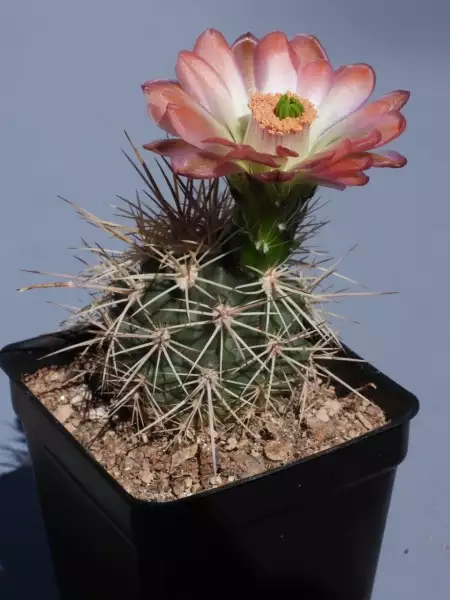Echinocereus coccineus SNL172 Jarilla Mtns. 3/29/20
This is a male plant. Note all those pollen bearing anthers surrounding the stigma. Wait, you might want to say. If it's male, why the stigma? Ok, biology time. It turns out that sexual reproduction was invented exactly once in nature. All sexual reproduction is fundamentally the same. The whole point is to unite male DNA and female DNA to make a zygote. Nature doesn't have different sex processes for plants and animals. The vestigial anthers and the vestigial style of this species just reflect that the basic perfect flower structure (male and female) was used up to a point, and it was then abandoned in favor of making two sexes in two different individuals. Some hormones generated by the DNA of the plant repressed the development of one sex. This is exactly the same process as in mammals. That is, all mammals start life, the zygote, as a female. At some point in development, the DNA of the organism starts making only one sex by secreting the proper hormones. What this means is that both sexes have vestigial growths that reflect the one-sex start of life. All male mammals have teats, even though no male has ever produced milk. The male teats are there because they developed in the embryo before the hormonal change to male was made. There apparently is no strong evolutionary reason for males to not have teats. (The Greeks believed that men have teats because they used to suckle children. It's a simpler answer to "Why do mean have teats?" than the real thing.) Secondary sexual characteristics are entirely determined by a delicate balance of male and female hormones at the right point in development. If Nature does this at the wrong time or in the wrong ratio, the individual that's born may not be identifiably either male or female. (11/48)
<<Prev
Index
Next>>

